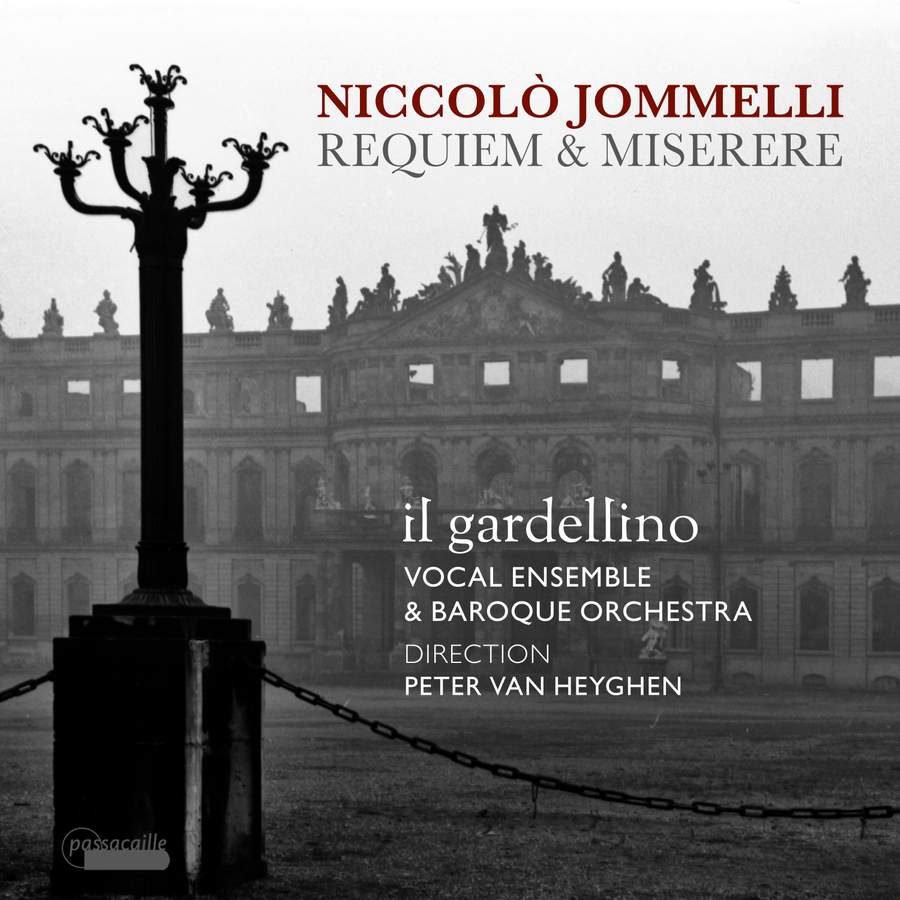JOMMELLI Missa pro Defunctis. Libera me. Miserere
View record and artist detailsRecord and Artist Details
Genre:
Vocal
Label: Passacaille
Magazine Review Date: 07/2020
Media Format: CD or Download
Media Runtime: 63
Mastering:
DDD
Catalogue Number: PAS1076

Tracks:
| Composition | Artist Credit |
|---|---|
| Missa pro Defunctis |
Nicolò Jommelli, Composer
(Il) Gardellino Peter van Heyghen, Conductor |
| Libera me |
Nicolò Jommelli, Composer
(Il) Gardellino Peter van Heyghen, Conductor |
| Miserere |
Nicolò Jommelli, Composer
(Il) Gardellino Peter van Heyghen, Conductor |
Author: David Threasher
The Requiem in E flat by Niccolò Jommelli (1714-74) became to the late 18th century what Mozart’s was to the 19th. It was composed in 1756 for the exequies of Maria Augusta of Thurn und Taxis, mother of the extravagant opera-loving Carl Eugen, Duke of Württemberg; hastily assembled in the eight days between her death and funeral, Jommelli saved time by repurposing some of his earlier Italian sacred works and by omitting whole chunks of the longer texts. Widely circulated in manuscript and performed around south Germany and Austria, it was conducted by Salieri at a high-profile memorial for Gluck in Vienna in 1787.
It’s a fascinating work, perhaps inevitably straddling the twilight of the Baroque period and the dawning of the Classical, its scoring for strings and organ situating its sound world closer to the austere purity of Pergolesi than to the operatic pictorialism of Mozart. It’s been recorded before, along with its associated Libera me, but the new recording is superior to its bigger-boned Moldavan predecessor in just about every respect. Peter Van Heyghen’s eight singers take turns as soloists and sing with true period consciousness, and his tempos are in every case more apposite (ie brisker), coming in fully 12 minutes ahead of Frontalini. The result at last reveals this minor masterpiece in its ideal light. Mozart might have been impressed upon hearing its preponderance of antico fugues alternating with Italianate solo writing, by the stark dotted accompaniments for ‘Rex tremendae’ or by the falling-sevenths figure for ‘et semini ejus’, which bears more than a passing similarity to ‘ne absorbeat’ in Mozart’s own Requiem.
The coupling is a Miserere that again shows Jommelli’s ability in the stile antico. If not as immediate in effect as the Requiem, it is performed with comparable care and affection.
Discover the world's largest classical music catalogue with Presto Music.

Gramophone Digital Club
- Digital Edition
- Digital Archive
- Reviews Database
- Full website access
From £8.75 / month
Subscribe
Gramophone Full Club
- Print Edition
- Digital Edition
- Digital Archive
- Reviews Database
- Full website access
From £11.00 / month
Subscribe
If you are a library, university or other organisation that would be interested in an institutional subscription to Gramophone please click here for further information.




